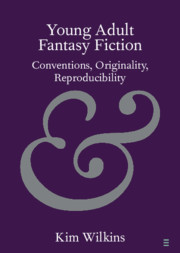Element contents
Young Adult Fantasy Fiction
Published online by Cambridge University Press: 11 July 2019
Summary
- Type
- Element
- Information
- Online ISBN: 9781108551137Publisher: Cambridge University PressPrint publication: 08 August 2019
References
- 15
- Cited by

